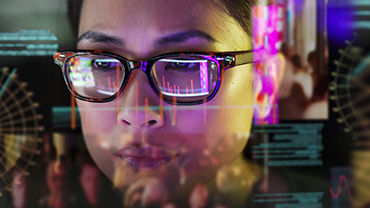In a two-part series, we will look at Non-Fungible Tokens, explaining what they are and how they will impact legal and how decentralized finance is part of it
In a two-part series, we look at Non-Fungible Tokens, explaining what they are and how they will impact numerous industries; and how decentralized finance (DeFi) is critical to understanding NFT’s importance within the legal industry.
Welcome to the early days of where blockchain goes mainstream, and the legal industry needs to take notice.
While Non-Fungible Tokens (NFTs) have been around for several years — remember CryptoKitties or even the original NFT, called CryptoPunks? Even if you don’t, NFTs have officially exploded into popular culture, begging the question: So, what are they?
A Non-Fungible Token is a token stored on the blockchain, which itself is a secure distributed database with redundancy, immutability, and clarity into tracking data or ownership. A token proves ownership of an asset. For example, a deed to your house is a sign of ownership to that plot of land and building. In the case of the first digital token, Bitcoin, a single Bitcoin is the title of ownership to the underlying value of the Bitcoin.
The best part about a token on the blockchain is the ability to track ownership and therefore authenticity, undeniably proving ownership.

Fungible refers to an asset that is easily exchangeable. In the classic example, a dollar is very fungible — you can hand a dollar to me in exchange for some gum, and I can then re-use that dollar for a can of soda. The physical dollar maybe different because I swapped with another in my wallet, but it is easily replaceable and exchangeable, so it is fungible.
Now, it gets interesting. A non-fungible token is a unique token that is not easily exchangeable or replaceable with another. With the mania that is occurring with NFTs, the best example is with art. Recently, Mike Winkelmann, known as @Beeple, a renowned artist who has worked with Nike and Apple, sold 20 pieces of his own work on the digital marketplace Nifty Gateway for a total of $3.5 million. And in the latest eye-opener, he sold a collection of many of his works combined into a masterpiece, titled EVERYDAYS: THE FIRST 5000 DAYS at Christie’s for $69 million. These transactions occurred on Ethereum, the primary blockchain platform of record for storing value, but Winkelmann’s art itself was simply digital images.
With the NFTs, we are proving that rare and scarce representation of things can create value, and that value can be captured on the blockchain. Let your imagination run wild for a moment: What this means is that nearly anything and everything that is represented digitally could also carry provable value.

For example, Jack Dorsey, CEO of Twitter, is in the process of selling his first Tweet, the original Tweet of Twitter. It is, as of this writing, estimated at a value of $2.5 million and projected to go higher. Why might you ask? Well, it is feasible to collect royalties on that tweet once you own it; or, you could hopefully resell it in the future. Lastly — and again, I beg your imagination for this thought — in the not too distant future, with people living in virtual reality, these pieces of art will have a home inside those worlds, too. Other examples, the NBA has now gotten in on the action by leveraging NBA Top Shot, selling limited edition, finite numbers of virtual basketball cards, including a short clip of a LeBron James dunk, which recently sold for more than $200,000.
In the past, I discussed asset tokenization, which is the simple idea that nearly anything could be represented on the blockchain as having value. It this is now happening. This could be a painting, your car, a house, or even a Tweet. Essentially, if you have something original, that you can then prove is yours, that item can derive value.
Through the lens of the legal kaleidoscope, we are entering a complicated but colorful place, and there are an incredible number of areas this will touch. As technology push us to rethink what we know, NFTs shall do the same. In this nascent area, contemplation about the impact on both the practice and business of law will hit multiple fronts. Here are just a few:
-
- Intellectual property — NFTs carry a huge target on their virtual backs from the IP angle. At the heart of these tokens is uniqueness and ownership, and that means that eventually, litigation will follow.
- Trust & estates — Possession comes in the form of a digital wallet. Access to the private and public keys will need to be accounted for and administered for these sorts of new assets.
- Anti-money laundering — One worry, at the moment, is that the buying and selling of these digital assets could be a way to disguise or launder dirty money. Although the underlining technology of the blockchain is leveraged, a general misunderstanding of its complexity makes it a temporary safe haven for the scofflaw.
- Tax & accounting — Millions of dollars are being transferred, soon to be billions; and those in the tax & accounting field will need to better understand this space to assist their clients. How are sales treated? What does appreciation impact? And how can we account for the transactions?
NTFs are likely here to stay. They will continue to evolve, however, representing nearly every assets class going forward. Law firms, corporations, tax & accounting firms, and government agencies will need to pay attention to this space in order to account for how this new technology impacts their individual [digital] pictures of the law.
In a follow-up to this piece, we dug into decentralized finance (DeFi) which sits above the NFT movement and is critical to understanding NFTs importance within the legal industry.







